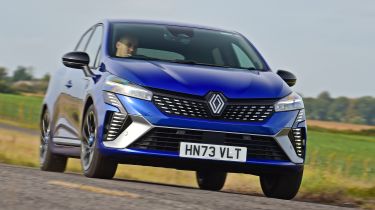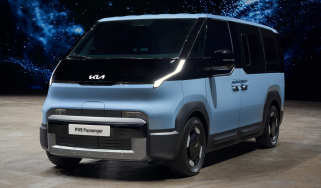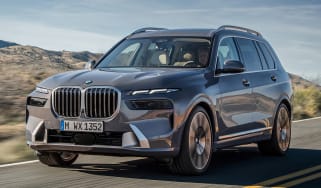Renault Clio - Engines, performance and drive
The Renault Clio is good fun to drive and rides well, but not especially quick

Overall, the Renault Clio feels like a quality product on the road: polished, comfortable, and, at higher speeds, as refined as some hatchbacks from the class above. But the Clio has also garnered a reputation for driving thrills over the years, and it remains one of the better-handling superminis on the market.
The steering is well-weighted and direct, and there’s just a hint of body roll as you chuck the Clio into corners. It also manages to remain composed even on bumpy back roads, thanks to the Clio’s forgiving ride. The heavily bolstered sports seats in top-spec esprit Alpine models also stop you from sloshing around the cabin when changing direction quickly, although wider individuals may find them a little snug.
The high-mounted six-speed manual gear lever in the pure-petrol model works well ergonomically but doesn’t have the most engaging gear change action. Changing gear is a more pleasurable experience in a SEAT Ibiza or Volkswagen Polo, but there’s nothing especially terrible about the Clio’s manual ‘box.
The Clio’s hybrid powertrain, meanwhile, always starts off running in electric mode, so you simply zip away from a standstill. You have to be incredibly delicate with the throttle if you don’t want to wake the E-Tech’s petrol engine, otherwise it’ll wake from its slumber once you go beyond 20mph. The transition is smooth enough in the default ‘My Sense’ drive mode, but if you switch to ‘Sport’ then the step-change is more noticeable.
0-62mph acceleration and top speed
The regular Clio is powered by a turbocharged 1.0-litre three-cylinder petrol engine that produces 89bhp and 160Nm of torque, gets from 0-62mph in a rather lethargic 12.2 seconds, and goes on to a top speed of 112mph. Power is sent to the front wheels through a six-speed manual gearbox.
Meanwhile, the Clio E-Tech uses a 1.6-litre four-cylinder engine and two electric motors, which produce a total of 143bhp, with up to 205Nm of torque at your disposal when you’re running on the electric motor. Renault says the hybrid Clio will sprint from 0-62mph in 9.3 seconds, which sounds decent, but the gearbox can become a little flustered deciding which gear to select and when to change up or kick down. Top speed for the Clio E-Tech also stands at 112mph.
The E-Tech hybrid system is a little different to what you’ll find in a Toyota Yaris. While the Clio has two electric motors, only one helps to drive the wheels, with the second smaller motor used to fire up the engine and make gear shift feel smoother. Power delivery is linear during hard acceleration, but once again, the transmission takes its sweet time deciding when it’s going to change gear and there are no paddles on the steering wheel, or any other way to force it to shift up.








